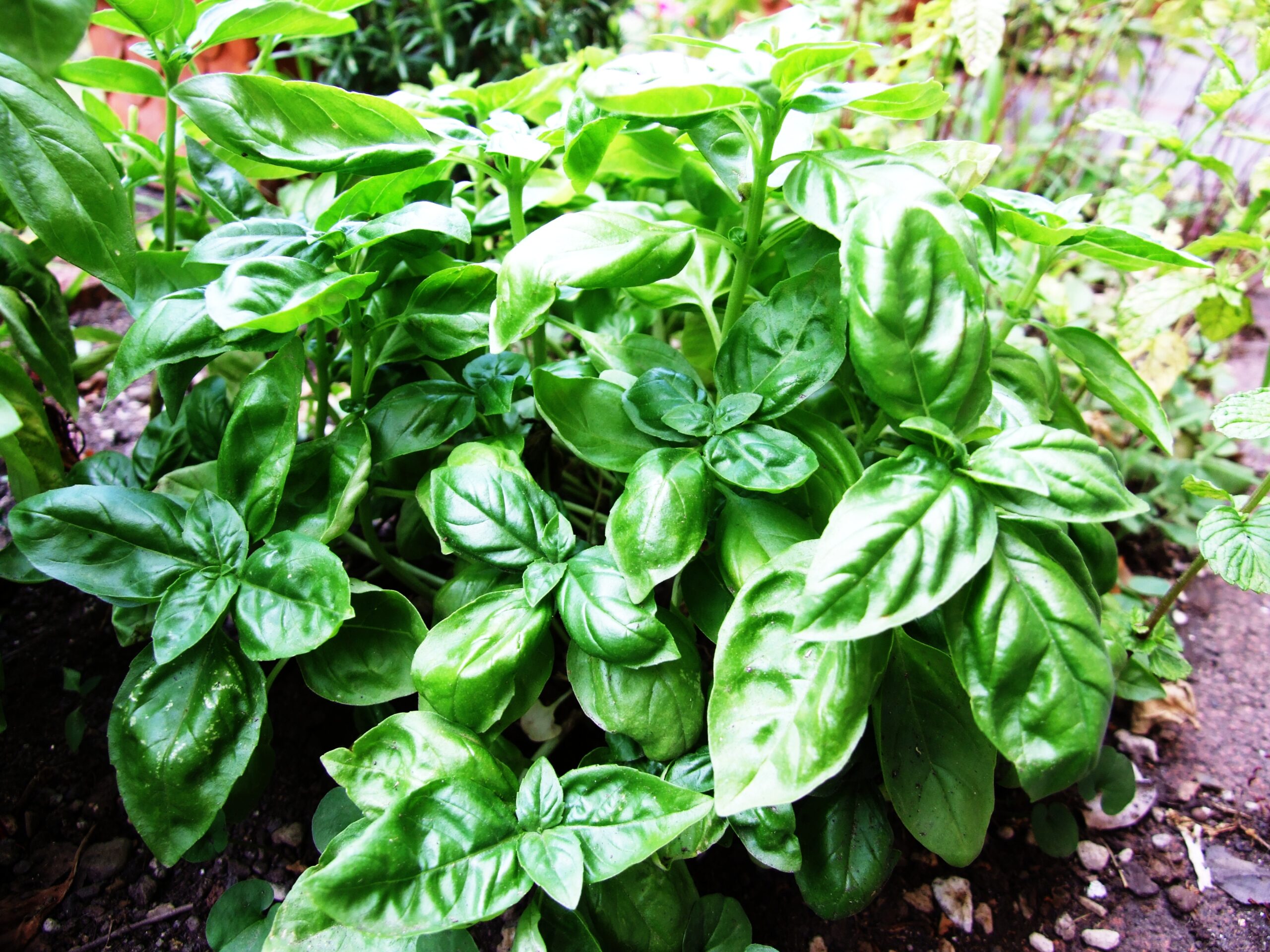Basil: The King of Herbs
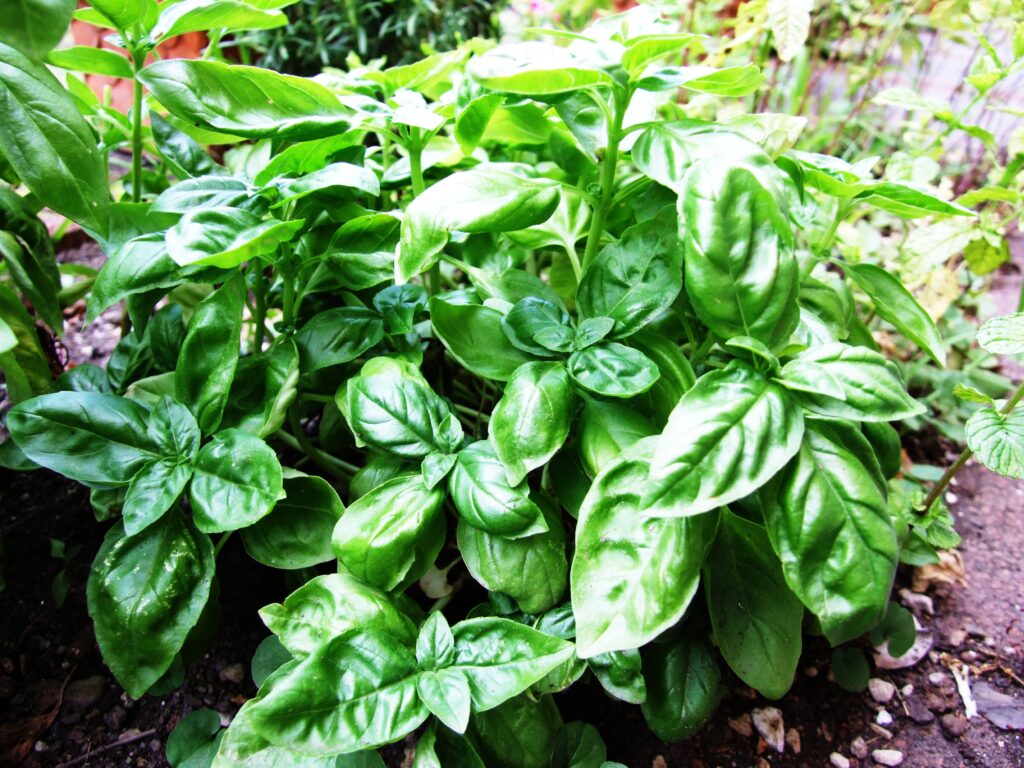
By: Habeeb Salloum/Arab America Contributing Writer
Pleasing to the sight smell and taste, basil has been known for centuries, in a number of Near Eastern and Mediterranean countries, as an herb of kings. In these lands, since the dawn of civilization, it has been prized above all herbs and spices. The Greeks in the ancient Hellenistic era called it the name basileus, a Greek word meaning ‘king’ to indicate its position among herbs. The nobility in that epoch of history used its essence as a royal perfume and ecstatically wrote of its countless joys and benefits.
In the Indian subcontinent, where it is believed the herb was first cultivated, a type of basil, ocimum sanctum, is revered as a holy plant. It has been used by the Hindus in their religious ceremonies for untold centuries. Often it is planted near their homes and temples as a dedication to the gods Vishnu and Krishna and as protection for the inhabitants from evil. Also, the Hindus believe that basil assures a human being guidance into Paradise. A leaf placed on the chest of a person at death is his special key to heaven. Yet, even if it is revered, the plant is not much used in the culinary art of the Indian subcontinent. Only as an ingredient in tea is it to some extent popular.
The neighbouring Persians also have a great respect for this kingly herb. Mothers plant basil on the graves of departed sons as a sign of their grief and at the same time love.
From the Middle Eastern world this aromatic herb entered Europe by way of ancient Greece. In that land, the plant has never lost its mystical lure. The inhabitants have always believed that basil keeps away the evil eye. Hence, sprigs of the herb are given to loved ones for their protection. On the other hand, the Romans did not have much appreciation for this plant. For some unknown reason, they believed that basil produced scorpions in the human body. This belief tended to retard its use as a condiment in the Roman kitchen. However, in later centuries the Italians, in contrast to their ancestors the Romans, became enamoured with this powerful plant. They attached to it mystical qualities and became its largest consumers.
Following the Greek and Roman eras, the plant was widely distributed from the Mediterranean Basin to the remainder of the world. Today, besides its traditional homes in India and in the Middle East, it is also cultivated on a large scale in Belgium, France, Hungary, Italy, Poland, and the U.S.
Basil, or as it is often called sweet basil (ocimum basilicum), is a sweet highly aromatic herb. There are in the world today perhaps 60 species of this tender low growing annual. It needs little tending and is easily grown from seed both indoors and outdoors. To thrive, it needs a warm sunny climate and light well-drained rich soil. With its green slightly shining leaves glistening in the sun and tiny creamy flowers, this small bushy plant, besides its pleasant aroma, gives an ornamental touch to any setting. When mature it reaches the height of 18 inches. However, basil is at its best when about 6 inches high. At this stage its perfume, taste and re-growing ability is at its strongest. Hence, when the tips of the branches are nipped at this height, before it blooms, it can be used the whole year. Easily grown in flowerpots at home, one need not worry where to buy the fresh herb. A never-ending supply of fresh basil can always be in the kitchen.
An important culinary herb, basil has a strong, pungent smell which enhances the lure of a good number of foods. Cabbage, eggplant, onions, potatoes, spinach, zucchini and especially tomatoes all blend well with this sweet-scented herb. The flavour of the leaves and stem of fresh basil with a sapidity somewhat like cloves, gives a sweetish mild zest to pastas, salads, sausage, soups, stews, and vegetables. It also adds a gentle minty taste to scrambled eggs, meat loaves and other meat, chicken, and fish dishes.
In France, Greece, Italy, Portugal, Spain, and in the Arab countries, where basil is a popular herb, it is used as a spice in a vast number of dishes. In these countries, its delightful smell and spicy taste appeal, alike, to any cook. It is often combined with garlic to make a condiment which is used in numerous dishes, especially soups and stews. In Greece, unlike most other countries, a few basil leaves are, at times, added to preserves to give them a special tang.
Besides enhancing the flavour of foods, there is a vast mythology which asserts that this herb has medicinal qualities. In the Far East it is used for calming the nerves and to relieve colds, diarrhea, and kidney troubles. The Greeks, from the days of Plato until our present times, have used basil as an antidote to reptile venom and kept it in their homes to keep flies away. In several other countries people believe that this widely used herb stimulates the appetite and the digestion of food, while others are convinced it aids in curing a patient inflicted with jaundice or cholera.
On the other hand, in some parts of the world, basil is a symbol of love. For the ancient Greeks the herb was extensively used as a love charm and as an aphrodisiac. This connection with sexuality has filtered down, in a fashion, to our present age. In Italy, where basil is the favourite herb, Italian country maidens will give their beaus basil sprigs to make certain they will win their love. At other times they will place a pot of basil in their windows as a signal for their lovers that they are available. If the gentleman in question comes courting wearing a sprig of this herb it will be a sign of his serious intentions. In the Middle East it is believed that the fragrant smell which a few pots of basil give a room creates the atmosphere conducive to romance.
Basil, oregano, rosemary, and savory go well together in a goodly number of foods. However, if used by itself, basil is at its epitome of greatness when in tomato dishes. Fresh or dried it develops the taste of tomatoes, especially in salads.
To be effective, this delightful herb must not be added while the food is cooking. It should be stirred-in a few seconds before the food is removed from the heat. If added too soon, it will lose its heady aroma.
Of course, the fragrance of the fresh herb is much superior to the dried. We are lucky today in North America because fresh basil is almost always available in produce, and supermarkets. Those who plant their basil plants at home, have it fresh and ready to use.
For the times when the fresh leaves are not available, dried basil is fine to use. However, if kept too long and not packed up properly, the dried leaves tend to turn dark and develop a noticeable stronger taste than when fresh. Yet, they can always be used as a substitute. In all recipes which call for fresh basil, 1 teaspoon dried can be substituted for 2 tablespoons fresh.
In any event, fresh or dried basil as a culinary herb is not quickly forgotten. Perhaps the ancients had a point when they claimed that it had the psychological effect of making the spirits cheerful and the heart merry. Hence, not only in its intoxicating aroma and taste but also in folklore, few plants can compete with its place in the kitchen and even in mythology.
To taste and feel its effect the following recipes will prove how one can enjoy this king of herbs.
Vegetable Soup à La Basil
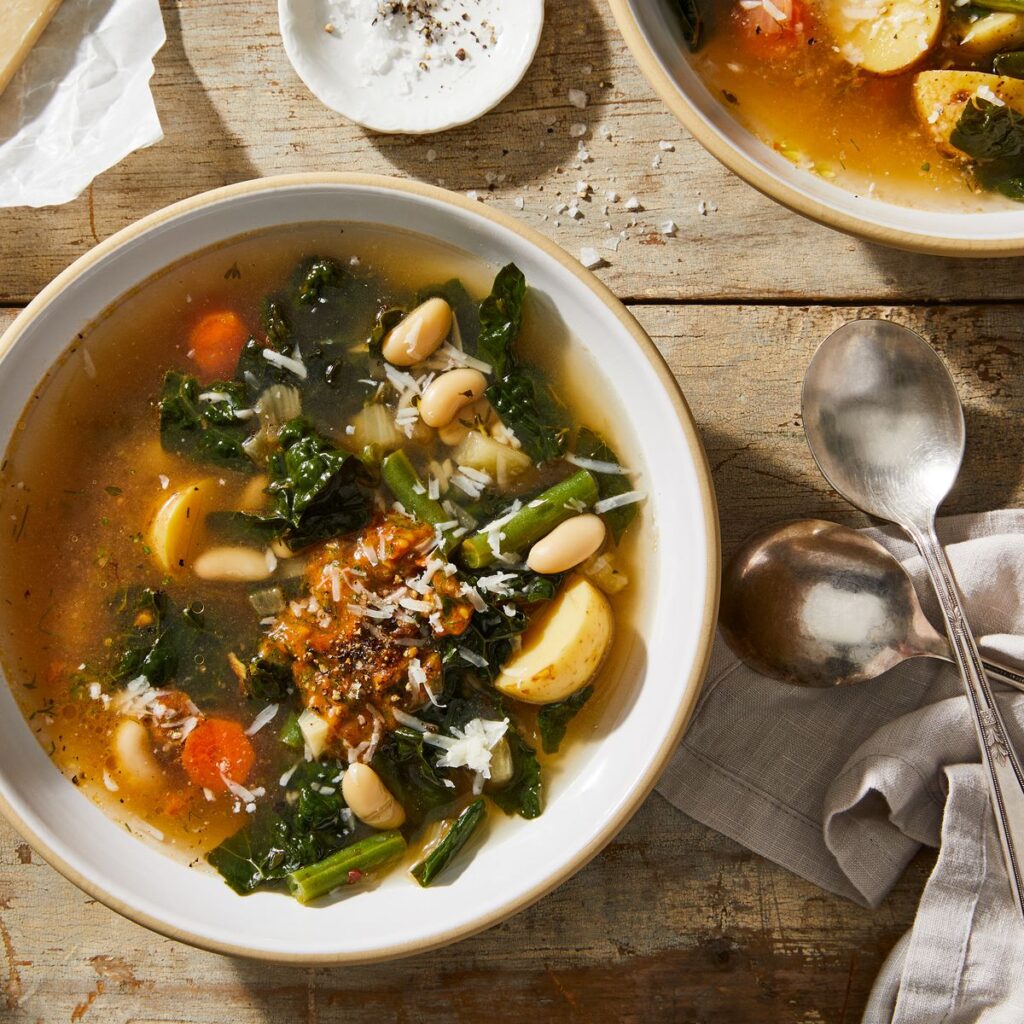
Serves 6 to 8
1 cup dried white navy beans, rinsed well
8 cups water
3 medium potatoes, peeled and chopped into small pieces
2 cups frozen peas
2 cups frozen lima beans
1 can stewed tomatoes (29 oz. 796 ml)
1 teaspoon salt
1/2 teaspoon cumin
1/2 teaspoon savory
1/4 teaspoon black pepper
1/8 teaspoon cayenne
4 tablespoons finely chopped fresh basil or 2 teaspoons dried
4 tablespoons olive oil
2 cloves garlic, crushed
- Place the beans and water in a saucepan, then cover and bring to a boil.
- Cover and cook over medium heat for one hour and 15 minutes, stirring occasionally, then add the potatoes and cook for a further 40 minutes.
- At the peas, lima beans, tomatoes, salt, cumin, savory, pepper, and cayenne and bring to a boil, then cook for another 30 minutes.
- Stir in the basil, olive oil and garlic, then remove and immediately serve.
Cooked Basil Flavoured Cabbage Salad
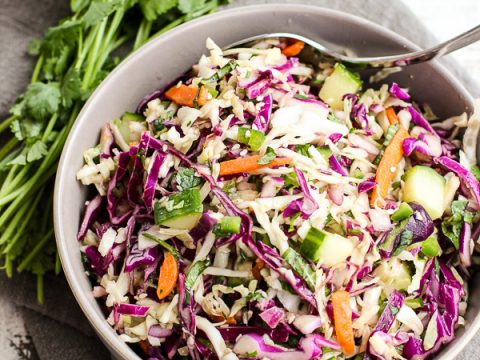
Serves 4 to 6
1/2 medium head of cabbage, shredded
1 teaspoon oregano
1/4 teaspoon black pepper
1/2 teaspoon salt
3 tablespoons lemon juice
3 tablespoons olive oil
1 teaspoon dried basil
- Place the cabbage in a pot and cover with water, then add the oregano and pepper.
- Bring to a boil, then turn the heat to low and simmer for 5 minutes.
- Remove the cabbage from the water and place on a serving dish, then sprinkle with the salt, lemon juice, olive oil ad basil and toss just before serving.
Note: The same ingredients can be used without cooking the cabbage for another
version of this salad.
Sweet Peppers with Basil
Serves 4
4 tablespoons olive oil or vegetable oil
1 medium onion, finely chopped
2 cloves garlic, crushed
4 large bell red peppers, seeded and chopped
1 teaspoon oregano
1/2 teaspoon salt
1/4 teaspoon black pepper
4 tablespoons finely chopped fresh basil or two teaspoons dried
2 tablespoons lemon juice
- In a frying pan, heat the oil, then stir- fry the onion and garlic until the onion is limp.
- Stir in the chopped pepper, oregano, salt and pepper, then sauté over medium heat for about 15 minutes or until the pepper becomes limp, stirring occasionally.
- Stir in basil and lemon juice, then serve immediately.
Rice Basil Pilaf
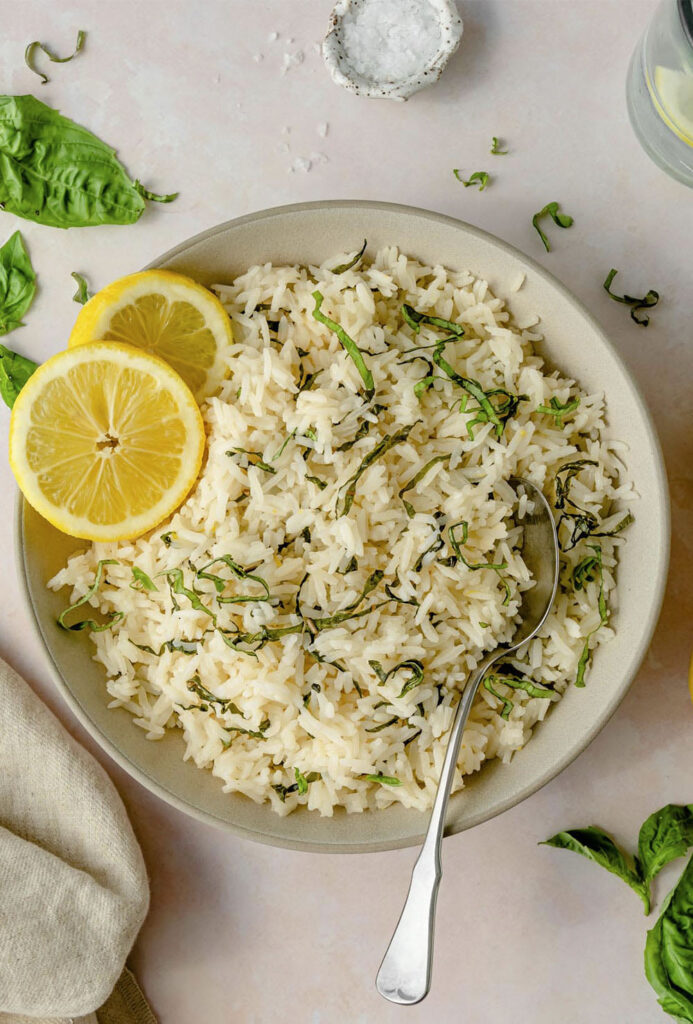
Serves 4 to 6
4 tablespoons butter
2 medium onions, finely chopped
1 cup white rice, rinsed
2 cups boiling water
4 tablespoons pine nuts or slivered almonds
1/2 teaspoon salt
1/4 teaspoon black pepper
1 teaspoon dried basil or 1/2 cup finely chopped fresh basil leaves
- In a frying pan, melt the butter, then sauté the onions until golden.
- Add the rice and stir-fry for three minutes, then stir in the remaining ingredients except the basil and bring to a boil.
- Cover and reduce heat to low, then simmer for 20 minutes.
- Turn off heat and allow to stand on stove for 15 minutes, then stir in the basil and serve immediately.
Spaghetti with Basil
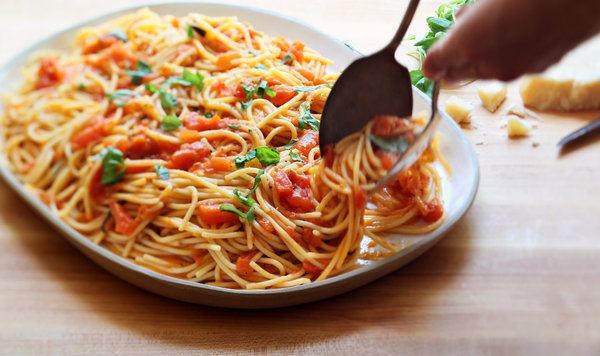
Serves 4 to 6
1-pound package spaghetti, broken into 2-inch pieces
2 cups finely chopped parsley
1/2 cup finely chopped basil or 4 teaspoons dried
2 cloves garlic, crushed
2 tablespoons blanched almonds
5 tablespoons olive oil
3 tablespoons butter
1 teaspoon oregano
1/2 teaspoon salt
1/4 teaspoon black pepper
1/8 teaspoon cayenne
1/2 cup grated parmesan cheese
- Prepare spaghetti according to package directions. Drain and transfer to serving dish and keep warm.
- Make a sauce by placing the remaining ingredients except the cheese in a blender and blending into a paste.
- Add the cheese, then blend for a moment.
- Removed and mix with the spaghetti, then serve at once.
Note: Extra sauce can be made and frozen for future use.
Lamb Chops with Basil Sauce
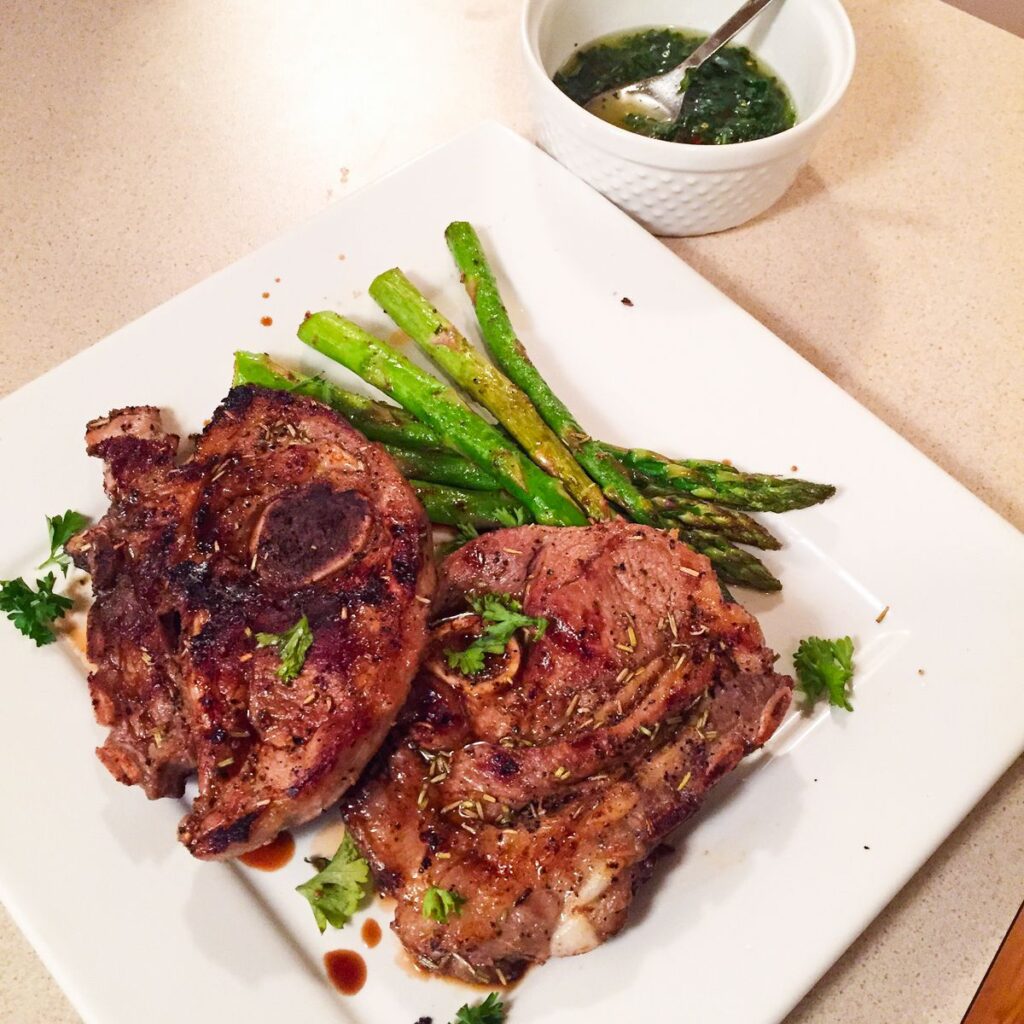
Serves 4
This dish is best served with mashed potatoes.
2 tablespoons olive oil
8 lamb chops
1 teaspoon salt
1 teaspoon thyme
1/4 teaspoon black pepper
1/8 teaspoon cayenne
1 medium onion, finely chopped
2 cloves garlic, crushed
1 1/2 tablespoons flour
1 cup water
2 teaspoons dried basil
- In a frying pan, heat the oil, then add the lamb chops and sprinkle with 1/2 teaspoon of the salt, thyme, pepper, and cayenne.
- Sauté over medium heat, turning chops over a few times until they are well done, then remove and place on a serving platter.
- If there is too much fat in the frying pan, remove a little, then add the onion and garlic and sauté until onion is golden.
- At the flour and stir-fry for 2 minutes, then stir in the water and remaining 1/2 teaspoon of salt and simmer for about 2 minutes, continually stirring.
- Stir in basil, then pour evenly over chops and serve immediately.
